BACK
ASTRO RAGGI
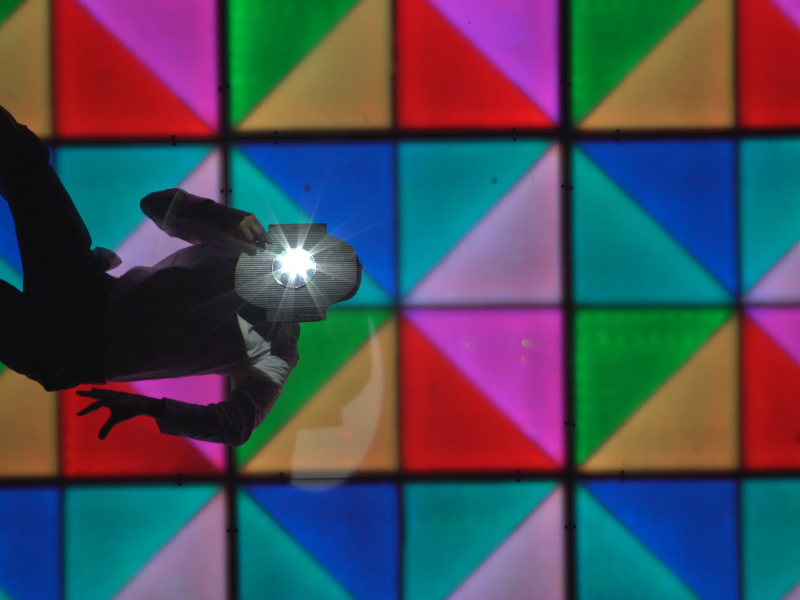



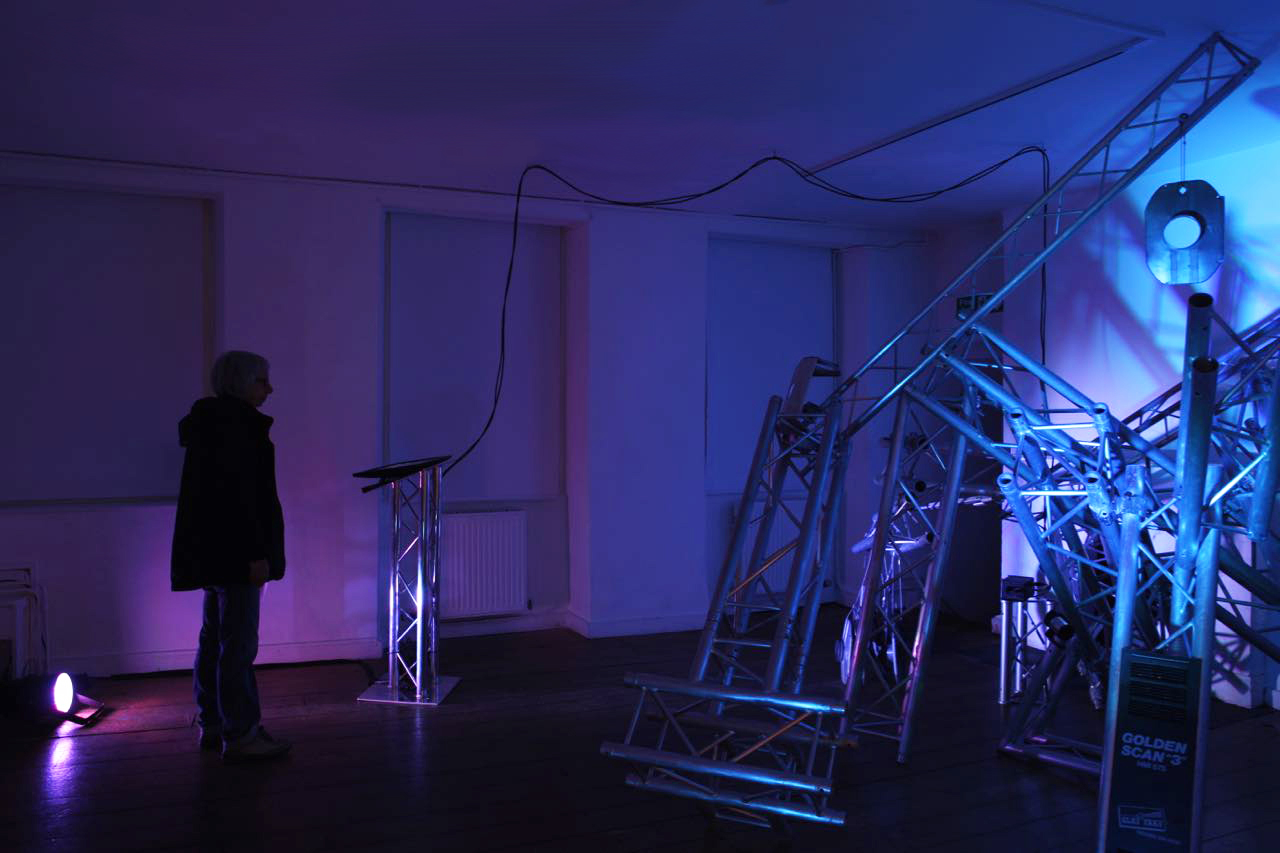
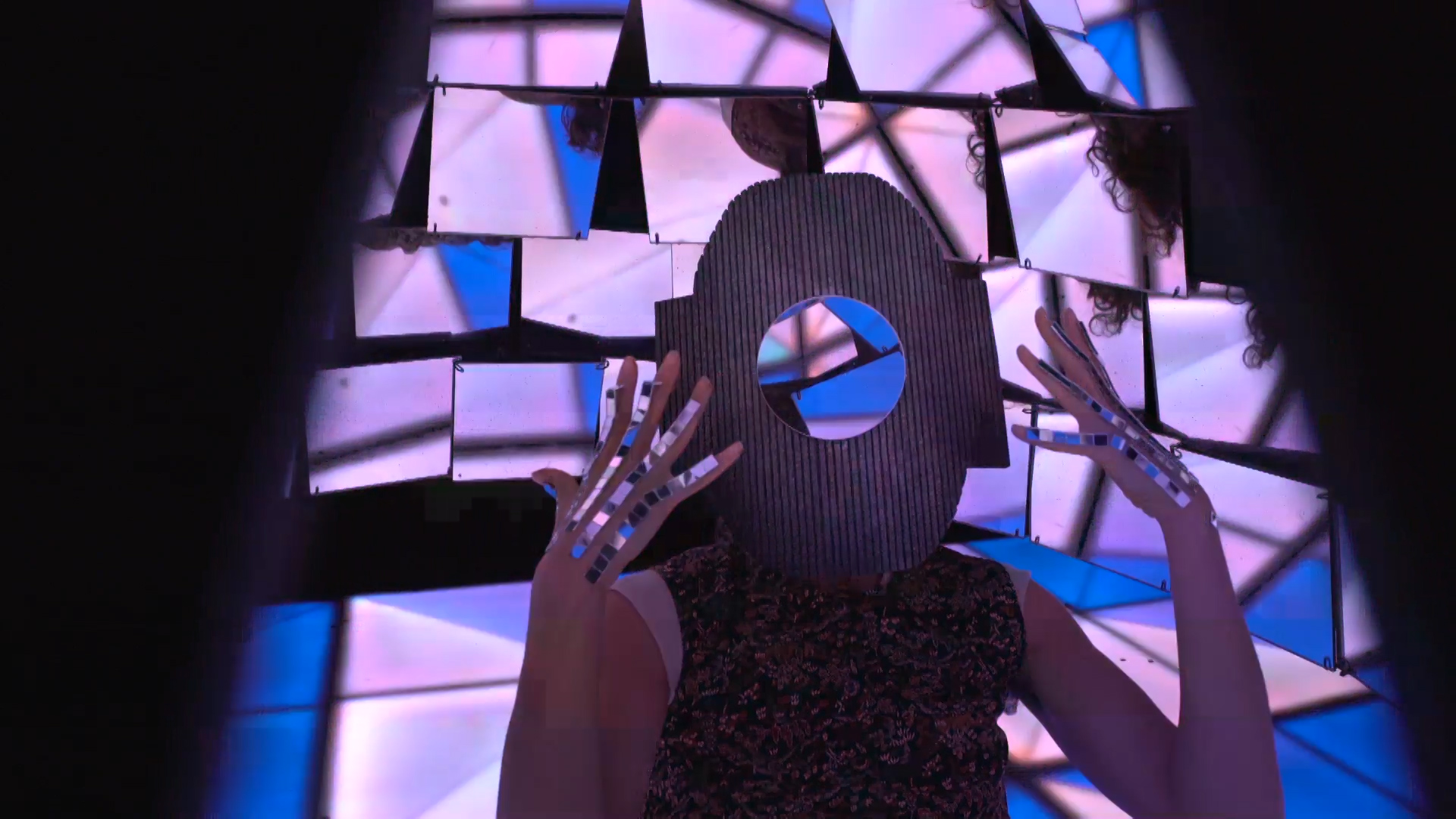
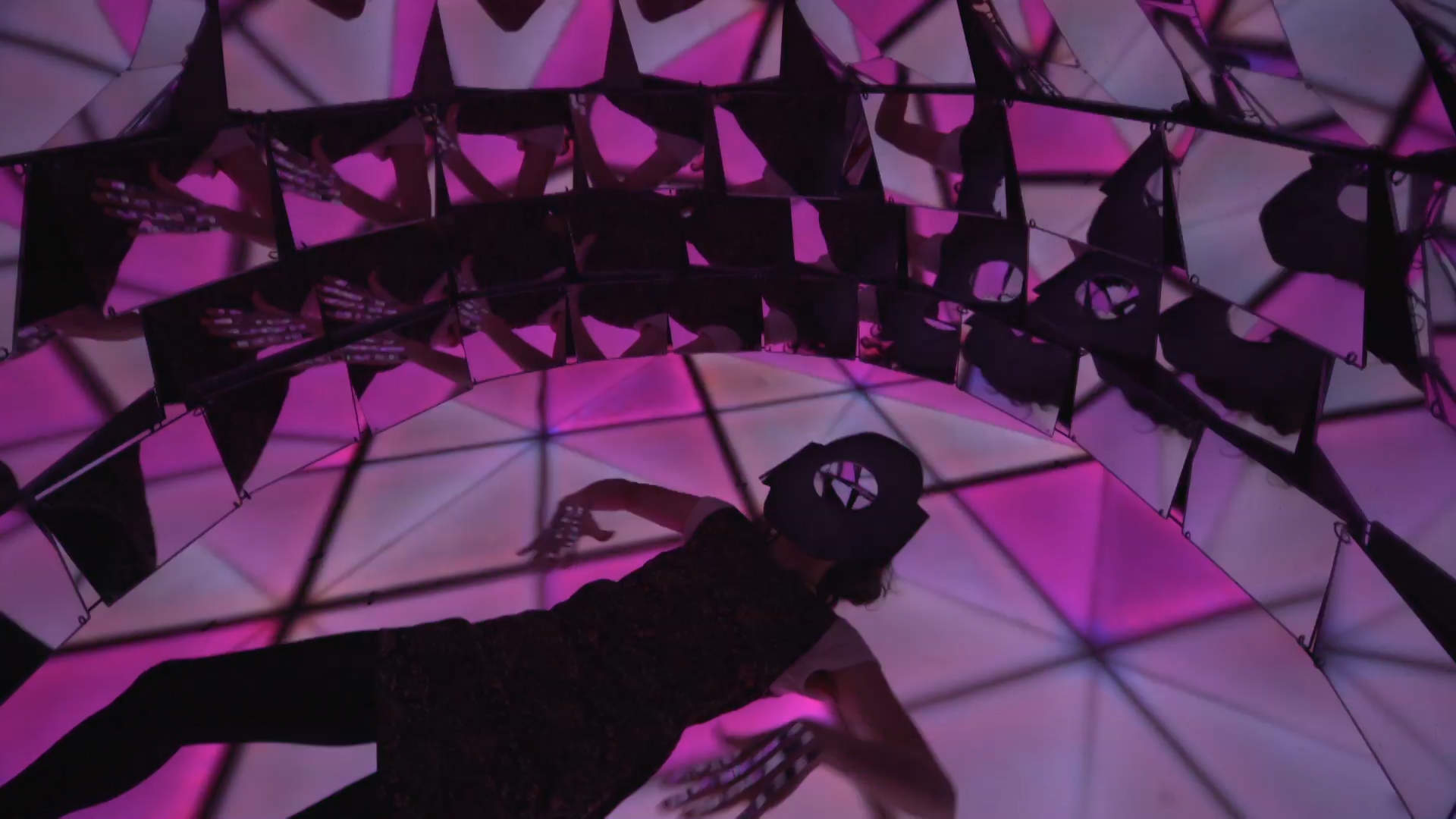




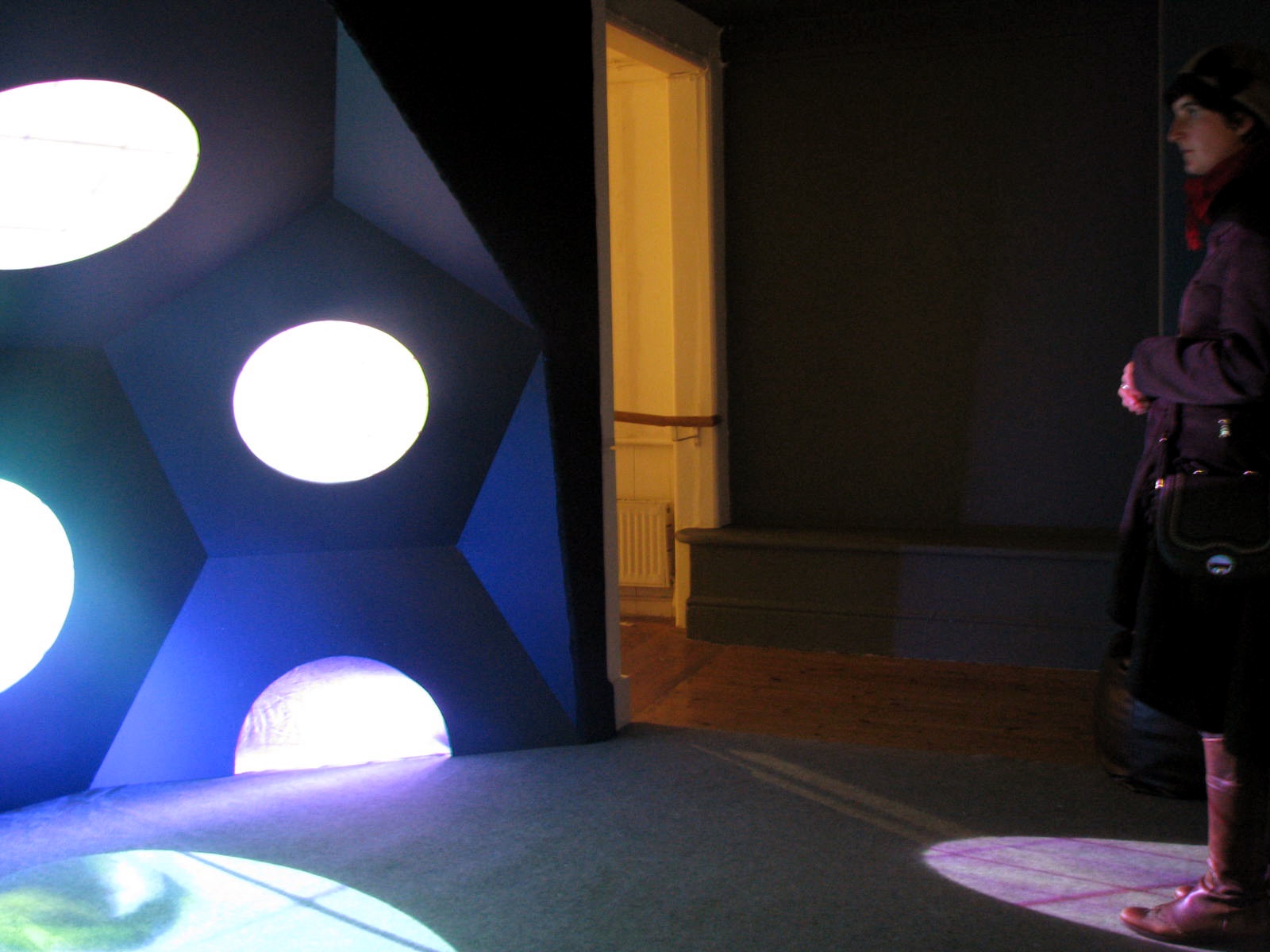
Plymouth Arts Center 2015/16
Video Documentation
https://vimeo.com/215523420
This exhibition begins with the story of Pasquale Quadri. Or rather a story about him. Megan Broadmeadow first heard of the Italian optician, who was also a cinema projectionist, and member of a band, from a lighting designer friend. Already pieces of the narrative were drifting into myth — he was a chemist, not optician — but it is well documented that his frustration with the poor quality of stage and nightclub lighting in the early-1970s led him to invent the Astro Raggi, the first disco light with motorised optics and lenses that cast beams of moving light around the room. It is said that his mother used to help him build prototypes and mirror balls on the kitchen table, and gradually this homemade DIY endeavour evolved into Clay Paky, one of the world’s leading lighting companies. The exhibition does not tell the story of Pasquale Quadri’s life, but rather imagines his relationship to the machines he invented.
The Astro Raggi begins and ends the exhibition. Scenius (no.1 on the floorplan) is a domed sculptural installation that positions visitors inside the Astro Raggi, giving a disco light perspective of a dance floor. Could this be what Quadri saw in his mind’s eye when he created the Astro Raggi? Each ‘lens’ is a porthole covered in scrim onto which a video of a breakdancer is projection mapped, beams ghosting through the screens onto the floor to create a multiplicity of colours, shapes, and body parts. A classic Italo-disco song plays and the dancer’s repetitive moves have a machinic quality and at times he appears to be wearing a Cyclops mask which flares when he looks directly at the camera.Scenius captures the sensation of being on the dance floor in a dark club, so immersed in the atmosphere it is as if individual identity starts to merge with, or take on the characteristics of, the immediate environment.
Upstairs in Gallery 1, Cybernetic Love (no.8) develops the idea of desire creating an identity that is a fusion of the body, space, and machines. The video’s point of departure is the anecdote of Quadri’s mother assembling components on the kitchen table. A dancer performs a series of folding and kneading actions from the domestic realm that gradually morph into a robotic and industrialised hallucination. Her movements begin to echo those of the projector which throws the image around the room, as if video, dancer and projector are joined in ecstatic unison. The camera viewpoint becomes more and more immersive until, again, she is suddenly wearing a Cyclops mask emitting a beam of light.
Broadmeadow’s research for this project included a residency in Venice studying carnival costumes. The Cyclops mask makes reference to the 18th century Servetta Muta (meaning mute servant woman), a strapless mask with large eyes but no mouth — its wearer held it in place by biting on a button or bit — making pointed reference to the relations between the liberating anonymity and temporary identities conferred by costumes and carnival, but also the silent role of women’s labour in the domestic sphere and how it supports, even performs, the work of acclaimed men.
Be There Or Be Square (no.3) is a large sculpture made from lengths of metal truss used in lighting rigs. The mechanical sound of an attached robotic arm is offset by the percussive clank of suspended metal plates as they are dragged slowly across the floor. This mechanic assemblage takes on bodily qualities, its sound like rasping breath while the angles and shadows imply movement, perhaps shapes on the dancefloor. The metal plates are like industrial versions of the African masks so fetishised by Picasso and the surrealists, their anthropomorphic qualities implying either a tangle of bodies or a series of freeze frames recording a body in motion.
The possibility of bodies becoming machines and objects implying bodies is confirmed by the realisation that the plates are, in fact, fascias to another classic Clay Paky disco light, the Golden Scan, but also the same shape as the dancer’s masks in Scenius and Cybernetic Love. This oscillation between bodies and machines is perhaps most pronounced in the sound pieceSuperCallibrateOrganicMotionLightExposures (no. 5) that fills the space with the sound of moving-head projectors. There is something not quite right about the whirrs and buzzes — instead of clean robotic cuts, certain sounds end with a vocal quality betraying their source: they are a lighting technician’s impressions of his machines, rendered with the accuracy and affection of an ornithologist mimicking birdsong.
In the same gallery is Expo (no.6), a reconstruction of Clay Paky’s futuristic lighting booth based on an archive photograph of a 1970s trade fair. The final work in this gallery is When The Lights Go Down(no.7). This video, and Super Scan Zoom (no.2) downstairs in the cafe gallery, were both shot in the Clay Paky factory near Bergamo. These more documentary elements of the exhibition are supplemented by footage of Quadri’s band Scalo Farini, with him visible playing the Hammond organ.
The final gallery is only visible through a peephole. Having started the exhibition from the perspective of being inside the light looking out, Are You Dancing (no.4) imagines the mind of its inventor. The machine itself is privileged: an original Astro Raggi light that would normally be mounted high up on the ceiling is up close on a plinth. Its’ optics and lenses are so precise that in moments of clarity the lightbulb and filament are visible on the wall, bringing to mind the modernist machinery of Lazlo Moholy-Nagy’s 1930 electrical kinetic sculpture Light Prop for an Electric Stage (light-space modulator). But the smoke machine also hazes the room, transforming light from an immaterial projected image into an opaque sculptural form that occupies space much in the way of Anthony McCall’s minimal 1973 installation Line Describing A Cone, but for the disco generation. The peephole gives us a partial view of these shafts of angled light spinning around the room, evoking the futuristic aesthetics of 1970s sci-fi and alluding to the fact that while we can speculate based on the objects he left behind, we will never really know what this Italian chemist/ cinema projectionist/ musician intended when he imagined a nightclub of the future.
Ben Borthwick – Artistic Director
With thanks to:
Edward Metcalf ( projection mapping)
Viola Bruni (dancer)
Pheobe Holman (Camera for videos in artworks)
Issac Brandt (dancer)
Matthew Faulkner (soundscape)
Amber Letiza- Amera (documentary camerawork)
Dajain Dailey (documentary camerawork)
Made with support from the Elephant Trust